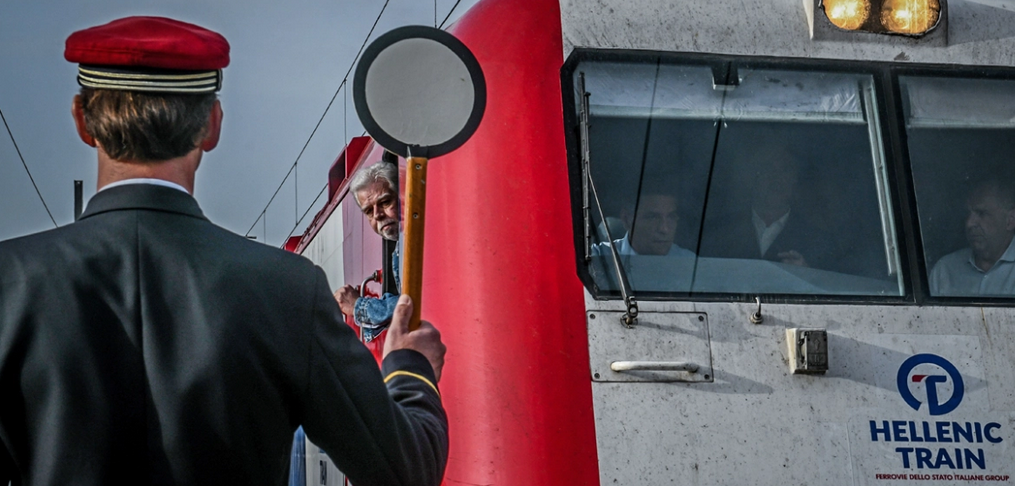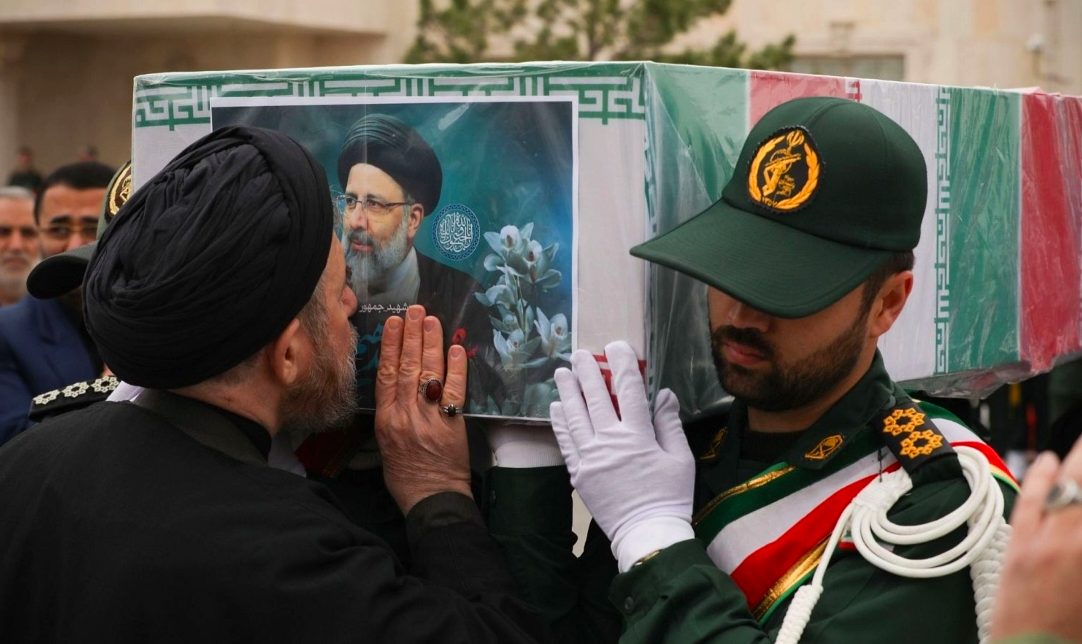As the skin of Amalthea, the goat that raised Zeus with her milk, was used to cover his shield, so any shield covered with goat skin was called “Aegis”. Today, the role of our shield to protect us from natural disasters, such as fires that have become more frequent, more intense and larger due to climate change, is fulfilled by the civil protection programme “Aegis” – the first of its kind in Greece.
In previous years, as firefighters explain, the ‘front line’ was formed by locals. They were the ones who fought the battle to contain the fire before the arrival of the fire brigades. But climate change has changed that.
The speed of development and spread, the size of the fires and the temperatures they develop make even escape very difficult. What countermeasures can be taken to escape this nightmare? Instead of goatskin, planes, helicopters, drones, fire trucks, ambulances, mobile operations centers.
The Aegis programme, with an additional €2.1 billion, adds to our shield against the climate crisis the above and much more. The Ministry of Climate Crisis and Civil Protection is already ‘running’ a series of tenders in order for our country not only to be ready for this year’s fire season, but also to change the way it deals with extreme phenomena.
Presentation of the “AEGIS” Programme
So that the self-sacrifice of the rescue teams is not necessary and we do not mourn human lives and property, so that the natural wealth of our country, the flora and fauna are not sacrificed in every fire, flood, earthquake…
Artificial Intelligence:
The Aegis project is meant for the future, but it will not… go far into the future. As the minister responsible, Vassilis Kikilias, made clear, in the last nine months, tenders worth 1.5 billion euros have been launched. By the end of May, another €320 million will be tendered, bringing the total to €1.82 billion, and the programme is expected to be completed before August. Project deliveries will start from 2025. But what are they for?
The big news, the procurement of 5+2 Canadair DHC 515s and the modernisation of the existing CL 415s, we learned recently.
But that’s not all. Among many other things, the Aegis programme includes operational equipment, air and ground response assets. We single out the supply of 10 medium helicopters, 25 amphibious single-engine aircraft, 1,100 fire brigade vehicles.
Hidden among these is the purchase by our country of Ericsson fire-fighting helicopters, which are the main fire-fighting helicopters every summer. They are the most popular helicopters in the fight against fires and every year there is a “battle” between the states to see who can rent them. There are only 35 such helicopters in the world. Greece now owns 10 of them.

25 amphibious single-engine fixed-wing aircraft are also being added to the fleet (we already have the Air Tractor of this type for immediate intervention in difficult fire areas) to replace the aging PZLs.
They also stand out, in addition to the equipment, and the means of support and coordination. These are 3 medium helicopters for health missions, natural disaster response and the transport of the first response team of the General Secretariat for Civil Protection, 3 turboprop air-surveillance aircraft, which will operate as airborne operations, monitoring and data recording centres, 1 twin-engine aircraft for the transport of first response teams as well as air ambulance and mobile operations centres.
More, however, the spotlight falls on the 101 drones that our country is acquiring and will be thrown into the battle with natural phenomena. Greece (which already has 13 of them) will acquire six types of Unmanned Aerial Vehicles with different capabilities and missions. Some of them are large and represent the cutting edge of modern technology in surveillance, as they have the ability to fly continuously for more than 10 hours.
Another new phenomenon is that some of the drones will become part of the fire trucks and will fly from them, giving firefighters the ability for aerial coordination and surveillance in the field.
Also debuting with Aegis is the use of AI technology for disaster prevention and response. Smart thermal cameras and smoke and fire detection sensors – temperature monitoring – are being placed in critical, remote locations in forests and estuaries.
On a 24-hour basis, the cameras and sensors monitor and record the data in their ‘area of responsibility’, compare and evaluate them via AI and, using instant messaging software, signal an ‘alert’ to the coordination centre if they detect an incipient fire or the onset of a flooding event.
The AI system will be able (in addition to transmitting live images and data to the operations centre) to give the drones precise coordinates of the points where they detect fires, so that the first aerial surveillance and coordination of the start of extinguishing can be carried out. In this way, firefighters gain critical time to catch up to contain the fire before it spreads. In a second phase, some of the AI systems will have the ability to do firefighting as well.
As far as warning systems and prevention tools are concerned, our country is acquiring a national database, new weather stations and radars, while the lifesaving tool for human life that has been proven in practice, the 112 early warning system, which incorporates new technologies using artificial intelligence, is also being upgraded.
At the same time, infrastructure and facilities are being upgraded to make human intervention more effective, with an emphasis on training in a simulation park and on equipping the volunteers who are thrown into the battle every year.
Vehicles, bridges
In addition to prevention, a great deal of emphasis is also placed on responding to a crisis. With Aegis, our country is providing a range of vehicles and means of all kinds. From the 728 fire trucks and 300 vehicles for the surveillance of agroforestry areas by the Forest Service, operational vans and auxiliary vehicles, to 83 ambulances and minibuses and 553 motorcycles and buses for the National Police.
Of the remaining vehicles, the 29 watercraft supplied by Greece for the transport of the necessary equipment by sea, but mainly so that the tragic scenes we saw in the disaster at Mati are never repeated: for the transport and removal of citizens who go down to the beaches to escape a fire…
And the personnel who will operate, however, will have (literally) the most advanced equipment at their fingertips. It is not only that there will now be more firefighters (15,000 permanent and 2,500 seasonal firefighters are being thrown into the battle against fires this year), but also that the forest firefighters specially trained in the world’s top fire brigades, who, as ‘THEMA’ revealed, will act like commandos in the heart of the fires, will carry the top personal protective equipment and firefighting equipment. But what is a huge innovation for Greek standards and what ‘Aegis’ brings is the means of ‘expedition’.
With the programme, our country is supplying 23 floating, folding bridges, which can be quickly deployed in case of flooding to facilitate the escape of the population and the access of rescue teams. Even more so, the ‘campaign hospitals’. Greece is procuring mobile health equipment and infrastructure to protect public health. This means that in cases of major disasters, the injured will not need to be transported to hospitals, but will be taken to hospitals. In effect, our country will have mobile hospitals for this purpose.
This latter supply includes equipment for the immediate and temporary accommodation of the population after major disasters. In the event of a major earthquake or a major fire, flooding, etc., the Greek authorities will no longer carry (only) tents to temporarily house the affected people, nor will they be dependent on the capacities of the adjacent hotels. They will be able in a very short time to set up small ‘villages’, with the affected people being able to stay in the relocated accommodation for the first period after the disaster.
Middle East – Blinken: Israel’s proposal to Hamas for Gaza is “extremely generous”
The above is just one part of how our country is changing its doctrine in protecting human life, property, infrastructure and natural wealth in the battle against the climate crisis. It is now divided into the triptych that contains prevention, suppression and, finally, restoration of the damage that will have occurred.
All this, with the protection of human life as a sacred priority, as PM Kyriakos Mitsotakis said when presenting the Aegis programme. A programme that provides Greece today with the necessary logistical and technological equipment to enable it to emerge unscathed from what is coming tomorrow…
Vassilis Kikilias in ‘Proto Thema’: ‘Aegis is a huge weapon’
The importance of the ‘Aegis’ programme is highlighted by the Minister of Climate Crisis and Civil Protection, Vassilis Kikilias. Speaking to ‘THEMA’, Mr. Kikilias says that the programme is not only a shield, but also ‘a huge weapon in our hands, which will start to be delivered from 2025.
With this program we will stop renting, we will own, and all new, not only 7 new Canadair, 10 medium firefighting and forestry movement helicopters, 1,100 firefighters, 101 drones, weather stations and radars, but all the necessary equipment to support our firefighters, our volunteers, our soldiers in any crisis. Our country is going through 9 months of tenders of 1.5 billion euros to have the necessary equipment over the next 40 years. It will pay for itself very quickly.
The climate crisis, we see it, is here and this year we will have a very difficult fire season. I promise that we will fight every day. From us, politicians, operational and citizens, it requires readiness and vigilance; this year we all have to be particularly vigilant.’

































